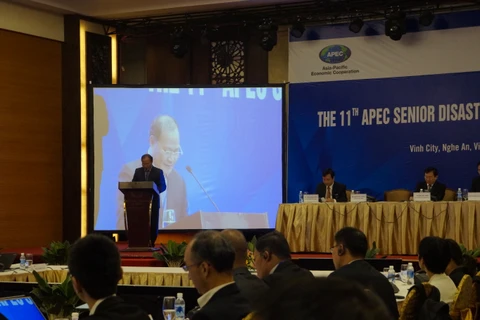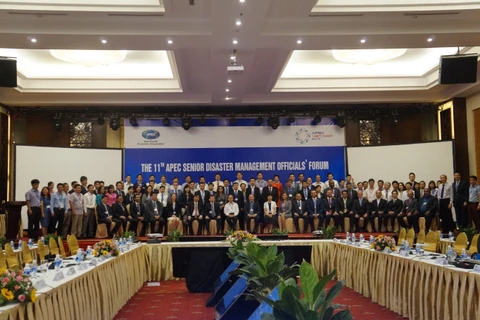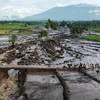 Child-centred disaster risk reduction is among effective measures to protect children - Illustrative image (Source: giaoduc.net.vn)
Child-centred disaster risk reduction is among effective measures to protect children - Illustrative image (Source: giaoduc.net.vn) Nghe An (VNA) – Child-centred disaster risk reduction is among effective measures to protect children, one of the most vulnerable groups to natural disasters, stated Mizuho Okimoto Kaewtathip, UNICEF Vietnam’s Chief Representative for Social Policy and Governance Section.
Addressing the Asia-Pacific Economic Cooperation Forum (APEC)’s 11th Senior Disaster Management Officials Forum in central Nghe An province, she said that a large number of children, who constitute 28.3 percent of Vietnam’s population, live in areas prone to disasters where there are multiple development challenges.
Children are the first to be affected by disruption of services - lost opportunities in education, nutrition, health care and protection have life-long impact, and as a result, inequities are passed onto the next generation, she said.
She noted that with the support of the Government of Japan and the UNICEF, Vietnam has achieved key results on child-centred disaster risk reduction as part of the recent emergency response to drought and salt water intrusion crisis, including the joint Vision and Positioning Note between the Ministry of Agriculture and Rural Development and the UNICEF.
Disaster preparedness were also developed, she said, adding that models on school-based disaster risk reduction was established in six provinces such as Ninh Thuan where sector-based child-centred risk reduction initiatives are underway.
She emphasized that with the prevailing disparities and inequity among ethnic groups and between regions that exacerbated by intense effects of natural disasters, humanitarian response along will not be able to keep pace in sustaining a consistent progress in child well-being in Vietnam.
Highlighting that resilient development lies at the heart of the cooperation in the field, she said that resilient development implies better preparing children, families and communities for shocks, and recovery quickly.
Ultimately, investment in resilient development is key to growth, development and social cohesion of Vietnam, and achievements of Sustainable Development Goals, said the UNICEF representative.
She revealed that building on the Joint Vision and Positioning Note and the emergency response, MARD and UNICEF embarked on the new joint collaboration programme on child-centred disaster risk reduction.
The programme aims to strengthen the capacity of institutions by analyzing the causes of inequities affecting children and exacerbated by natural disasters, reduce child vulnerabilities through integrated education, health, nutrition and water sanitation services, improve school safety and implement universal social protection system. It also seeks to strengthen the capacities of communities, families and children by equipping them with knowledge and life skills to prepare and cope with natural disaster, and promoting youth-driven initiatives using new technologies.
Declaring that partnership its core of the programme, she called for further cooperation with like-minded countries and partners.
Held from September 21-22, the 11th Senior Disaster Management Officials Forum gives a good chance for APEC economies and international organisations to share expertise in disaster management and dealing with new normal disasters, including landslides in coastal areas super storms and tsunami.-VNA






















